The Pallavicino Castles and the Salt Roads
Travelling time, amateur: 3-4 hours
The route, which is of medium-high difficulty, takes you up and down through the hills of Salsomaggiore Terme, allowing you to discover what were once the “Salt Roads”. Along the way, you will come across the strongholds of the Pallavicino Marquises, who between the 11th and 13th centuries created a veritable salt industry in the Salsomaggiore area.
The departure point for this route is the car park in Viale del Lavoro in front of Terme Zoja. First head for the cycle path along the Ghiara stream; at the railway station, take the path, and follow it as far as the municipal bus depot in Via dei Gelsi. Having cycled along the entire route, leave the provincial road, and take the uphill road towards Costa Marenga. There will be a couple of kilometres uphill before you reach the top of the hill and can admire the view. Continue along the asphalt road and pass the group of houses in San Rocchino before proceeding along the path indicated by the CAI signs (trail P1). Going downhill, surrounded by vegetation, you will arrive in the small hamlet of Salsominore, where you will find the remains of one of the Ancient Salt Pans, also known as “Portici del Sale” (Salt Porches). Looking up, you will be able to see the bell tower of the Church of Cristo Salvatore. A few metres further, a dirt road on the left will take you to an off-road track completely immersed in the hills.
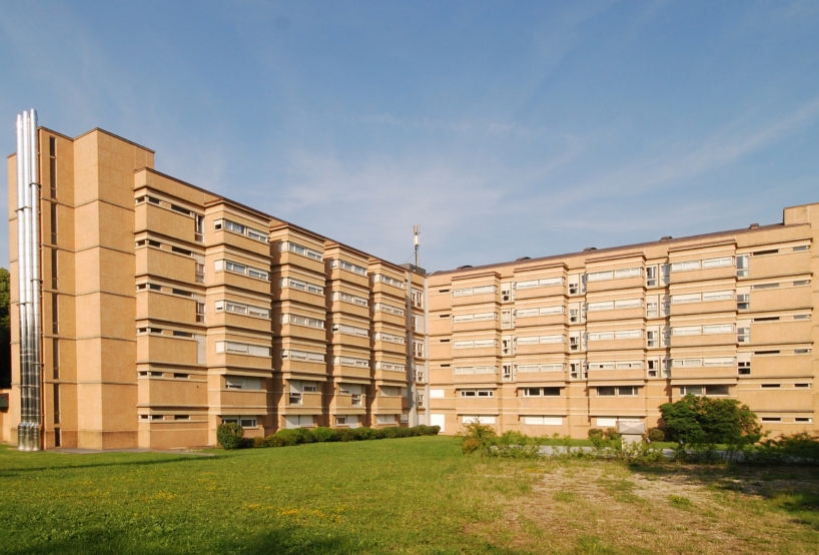
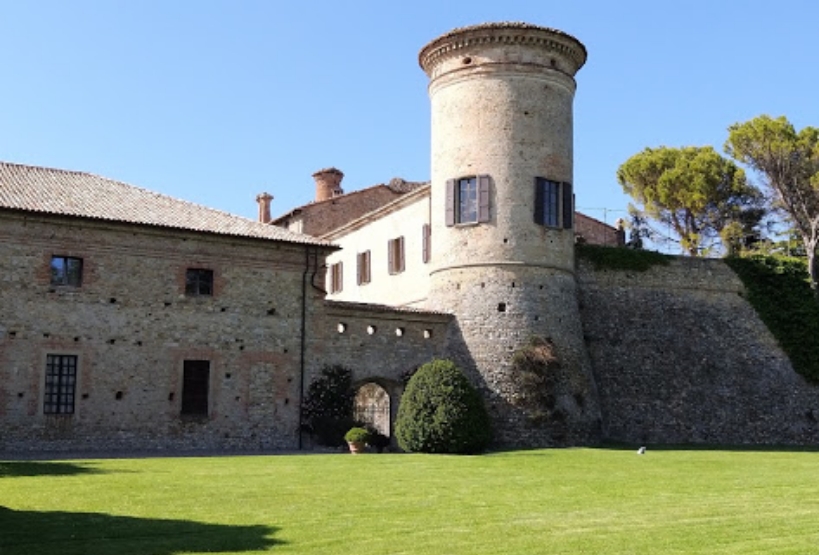
Reaching the hamlet of Castello di Scipione, you will find the manor of the Marquises Pallavicino (which can be visited) from whose main tower it is possible to see on clear days the outlines of Parma, Piacenza, and Cremona. Taking a downhill stretch through the vegetation along the dirt road will take you past the Osteria del Castello. You will then pass through Case Boselli before turning left towards SP57 in the direction of Vigoleno (SP109).
Past Trattoria Cavallo, at the fork, keep to the right along the provincial road which will bring you to the “La Bocca” rest area in the Parco Regionale Fluviale dello Stirone. Here it will be possible to take a break among the park’s lush vegetation, which includes poplar, elm, oak, cherry, blackthorn, and hawthorn trees.
Having enjoyed your stop, resume your journey along the path that runs alongside the Stirone stream. Heading along the single track among the trees of the riparian wood, you will be able to see fossil outcrops dating back to the Upper Miocene period (8 million years ago). At the end of the route, you will reach the “Tre Pioppi” area. Here, you will take the dirt road on the left, which leads to the SP109 and continues in the direction of Vigoleno.
Catch your breath, shift gears, and ascend the hills to reach the Vigoleno Castle village, where you will be able to admire the walls and flawless integrity of its defence system.
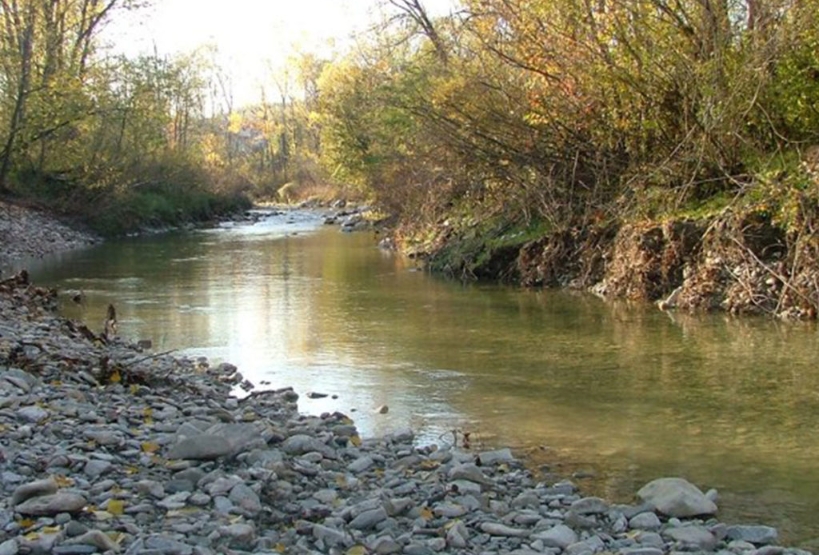
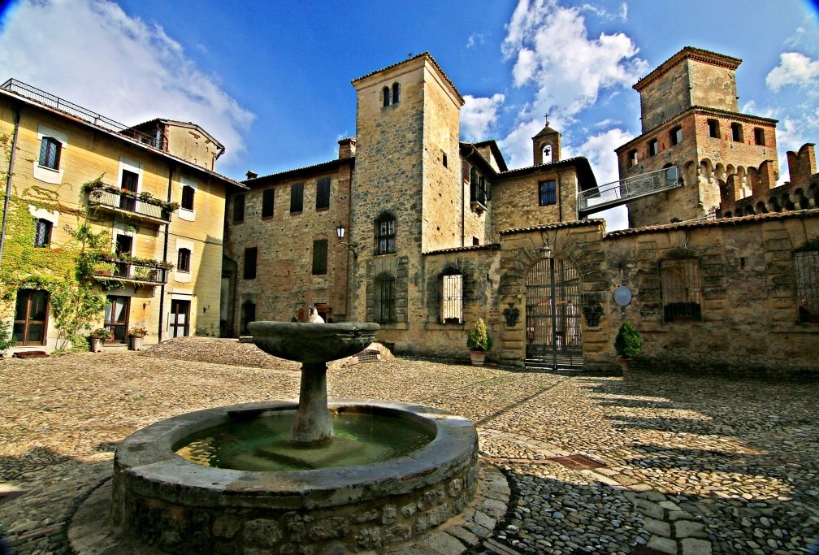
Entering the inner courtyard, you can admire the keep (which can be visited) and, if you are hungry, enjoy refreshment at one of the village inns.
After the stop, continue downhill towards Case Sozzi. The road, a carriageway flanking the ridge, leads you between hillside views and rows of vineyards down into the valley towards Villa.
At the end of the descent, follow the asphalt road along the bed of the Stirone stream. The route will take you further downhill, crossing the Stirone stream on the Case Passeri bridge before continuing along the dirt road that passes by the Pietra Nera — an ophiolite, or rocky spur, evidence of the geological transformations of the Apennines – and the small lake below, formed by a natural spring.
Follow the off-road track and climb towards Cangelasio Costa, which flanks Monte Combu.
At Costa, a short uphill tarmac road brings you to the start of a new downhill dirt road.
The hike continues along dirt roads and paths through the hills, skirting the slopes of Mount Pianazzo. You will reach an asphalt road at Piè di Via. On the last part of the route, you will see on your left Contignaco Castle, built by the Pallavicino family in the 11th century. The stronghold can be visited and offers tastings of wines produced by the local winery.
Continue to the Romanesque parish church of San Giovanni, perched on the top of the hill.
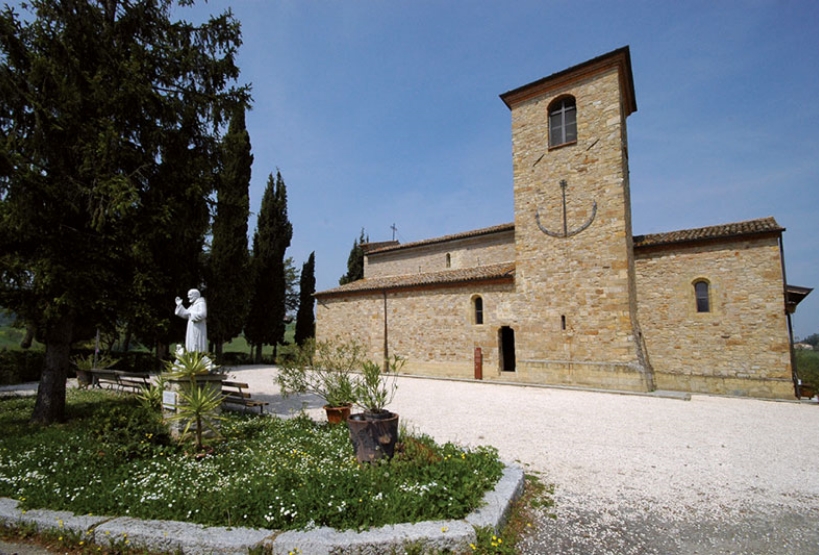
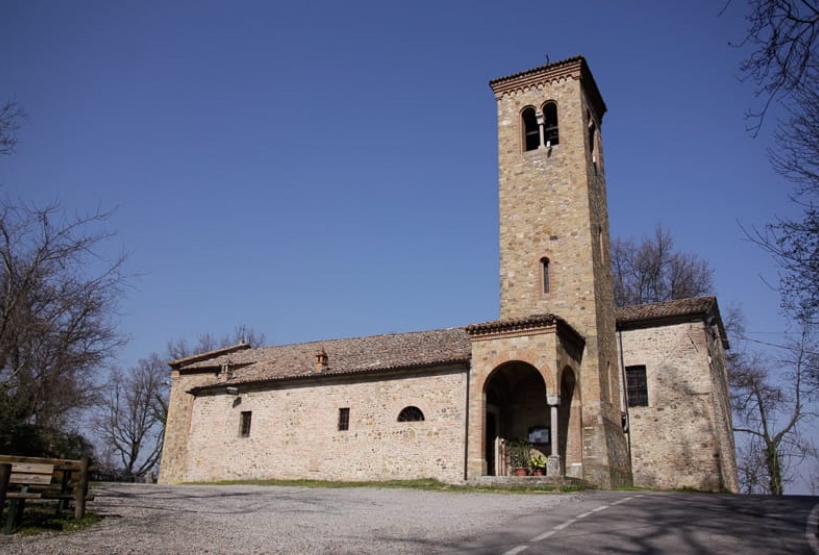
Continue uphill following the main road, which will turn from asphalt into dirt track. At the top, get ready for a descent, with thick woods on the left and scenic views of the valley on the right.
The route leads on to San Vittore and then continues along Boffalora road. Pedalling through rolling hills, you will cover 5 km equally divided between uphill and downhill, which will lead you to the village of Tabiano Castello.
On the way, you will come across the 16th-century church dedicated to Saints Gervasio and Protasio. The Castle of Tabiano was once the property of the Marquis Pallavicino. It survived the struggles between the Guelphs and Ghibellines and is now a private residence open to the public. You can admire the watchtower and drawbridge, which provides the main entrance to the castle. The upper part of the village is characterised by the walls built between the 12th and 13th centuries to defend the castle.
In this quaint little village, there will be the possibility to stop off at an adjacent inn.
Returning to the valley, you will reach Colombaia before climbing the tarmac road to Variatico.
After a couple of kilometres, the asphalt gives way to a double track that leads you to Bargone road and from there to a castle of the same name, the last Pallavicina stronghold that you will encounter on this route, which is now privately owned.
In the square in front of the castle, the Church dedicated to the Assumption houses a wooden statue of Blessed Orlando. Each year on the day of the Saint’s feast, many local residents bring their pets for an annual blessing.
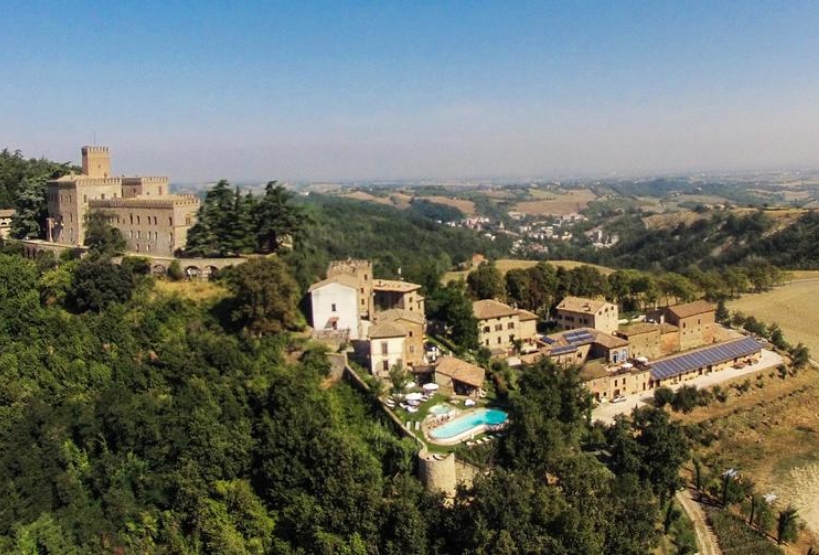

Finally, continuing down a last path through the greenery will bring you towards Salsomaggiore Terme, where this hike will end.
In Salsomaggiore, you can visit some of the city’s historical sites: the railway station, the Mazzini Park, built at the beginning of the 1900s, or, along the promenade, the Piazza Lorenzo Berzieri with its magnificent Art Nouveau palace alongside the Pozzo Scotti, which was drilled at the end of the 1800s for the extraction of sodium chloride, bromide, and iodide water. This is an ideal spot for taking a break and enjoying a delicious homemade ice cream.
Elevation profile
Places
-
Salsomaggiore
Start 0,0 km
-
Campore
3,7 km
-
San Rocchino-Costa Marenga
5,0 km
-
Salsominore
6,8 km
-
Scipione Castello
9,0 km
-
Scipione Ponte
10,1 km
-
Case Passeri
14,6 km
-
Vigoleno
21,7 km
-
Cangelasio Costa
28,2 km
-
Contignaco
35,1 km
-
San Vittore
38,3 km
-
Tabiano Castello
43,4 km
-
Bargone
52,0 km
-
Campore
54,9 km
-
Salsomaggiore – Terme Berzieri
56,1 km
-
Salsomaggiore
Arrival 57,1 km
Length: 57 km
Duration: 3-4 hours
Difficulty: Medium
Height difference: 1571 m
Minimum height: 111 m
Maximum height: 430 m
Road surface: Asphalt, gravel road, trail
Highlights of the itinerary
Castello di Scipione dei Marchesi Pallavicino
The Castle of Scipione of the Pallavicino Marquises is the oldest castle in the province of Parma and among the oldest in the region. It is the only one still inhabited by direct descendants of the founding family.
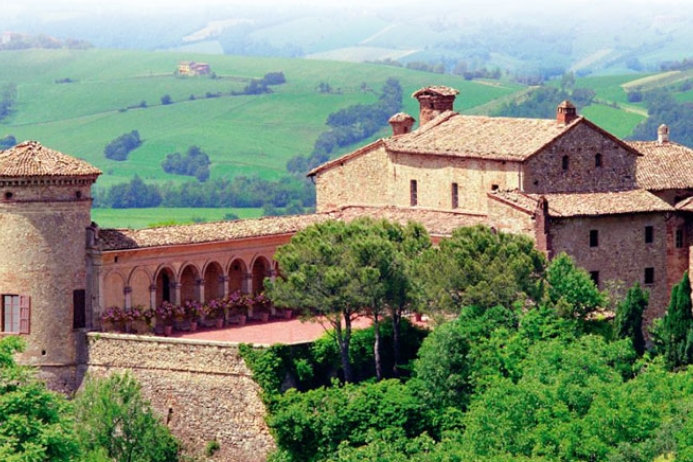
Tabiano Castle
Built at the beginning of the 11th century, Tabiano Castle was one of the fundamental garrisons of the Pallavicino Marquises, responsible for the control of the salt wells of Salsomaggiore and Tabiano. After centuries of dispute, in the 1800s the castle was transformed into a private home and the centre of a farm.
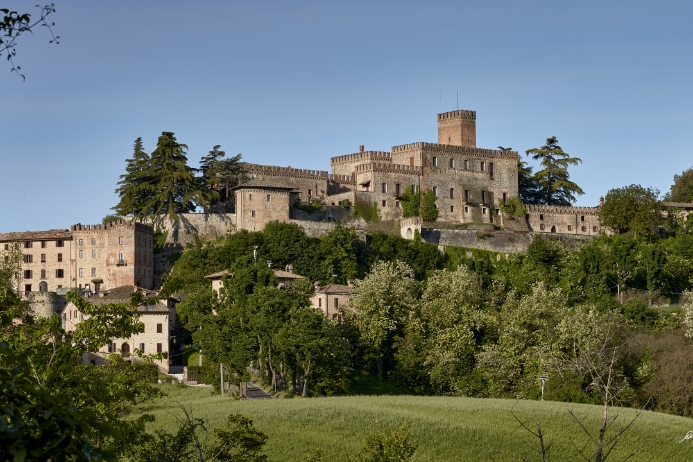
Church of S.S. Gervasio and Protasio – Tabiano Castello
The small parish church of Tabiano Castello, built in the Romanesque style of the 16th century, is dedicated to Saints Gervasio and Protasio.
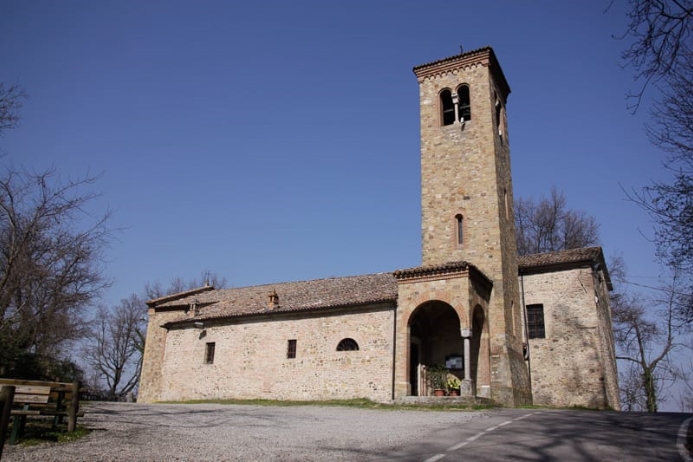
Romanesque parish church of San Giovanni in Contignaco
The Church of San Giovanni was built on the top of a hill in pre-Roman times. Inside can be found a collection of 14th and 15th-century frescoes and paintings by a unique local artist.
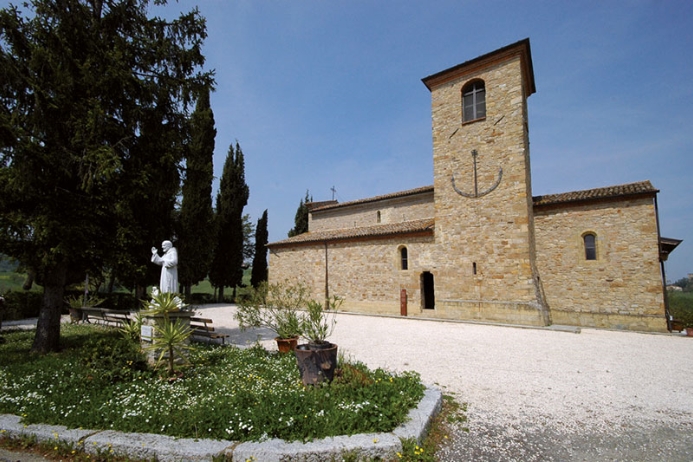
Railway Station
An expressive monument of typical 20th-century artistic and urban planning design, the pink and white travertine Railway Station was designed by engineer Cervi and inaugurated in 1937. In a reduced style, it was modelled on Milan’s Central Station.
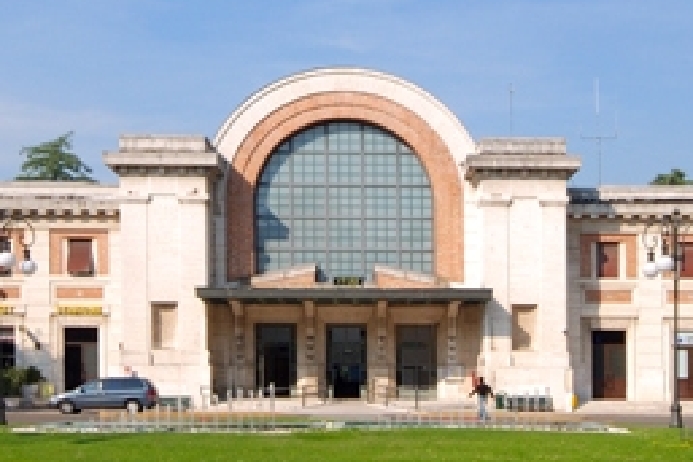
Mazzini Park
The historic public park, founded in the early 1900s, is located behind the large modern building of the “Terme Zoja”. This area of greenery, which was known in the past as “Parco Regina Margherita” (in homage to Margaret of Savoy, who used to visit the spa), features a typical Italian garden, a pond, and many trees dating back to the first planting of the park.
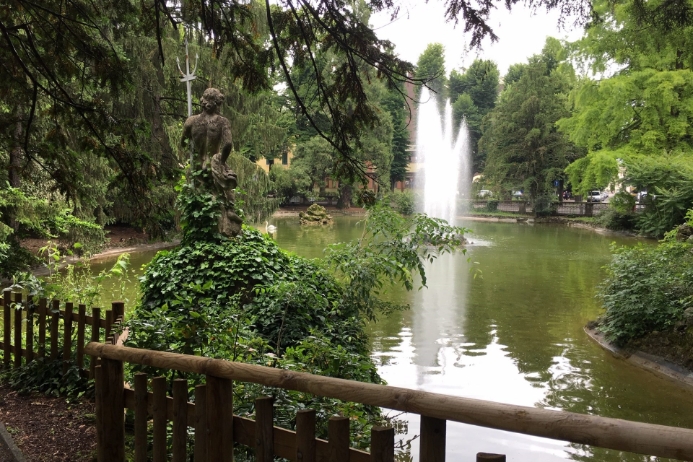
Lorenzo Berzieri Spa
The “Palazzo delle Terme Berzieri” is one of the most complex and interesting buildings of the spa centre, a symbol of European thermal bathing culture and of the town of Salsomaggiore Terme, and a unique example of spa Art Deco. This monumental Art Nouveau palace is listed as part of the cultural heritage of Emilia-Romagna.
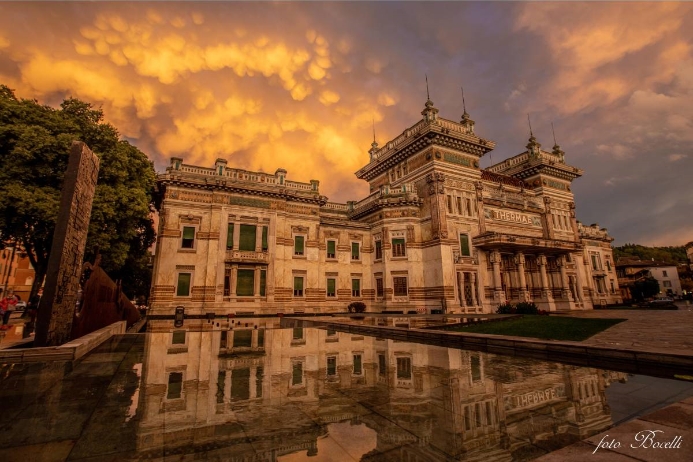
The Village of Vigoleno
Less than 20 minutes from Salsomaggiore, the castle of Vigoleno with its crenellated walls dominates this splendid village, which has been included in the list of Italy’s most beautiful villages and is also registered as an Orange Flag holder by the Touring Club.

Contignaco Castle – Aldighieri Fortress
The castle of Contignaco, complete with its tower standing over 30 m high, was built by Adalberto Pallavicino around the 11th century. First a fief of the Pallavicino family, in 1315 it was conquered by the Aldighieri family of Parma who sought to control some of the area’s salt pans.
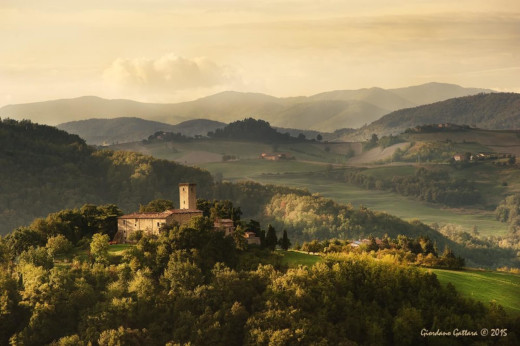
Mountain bike trails
Discover the range of trails
IRoutes of different difficulty, length, and duration. Here there are also some real mountain bike trails ideal for regional competitions.
Road bike trails
Discover the range of trails
The area around Tabiano Terme offers cycling enthusiasts routes of varying difficulty, length, and duration, ideal for admiring the history, nature, landscapes, and culture of this place.

